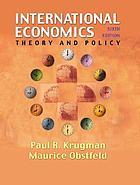5. The following paragraphs appeared in the New York Times on September 22, 1986 (see Europeans May...
Question:
5. The following paragraphs appeared in the New York Times on September 22, 1986
(see "Europeans May Prop the Dollar," p. Dl):
To keep the dollar from falling against the West German mark, the European central banks would have to sell marks and buy dollars, a procedure known as intervention. But the pool of currencies in the marketplace is vastly larger than all the governments' holdings.
Billions of dollars worth of currencies are traded each day. Without support from the United States and Japan, it is unlikely that market intervention from even the two most economically influential members of the European Community—
Britain and West Germany—would have much impact on the markets.
However, just the stated intention of the Community's central banks to intervene could disrupt the market with its psychological effect.
Economists say that intervention works only when markets turn unusually erratic, as they have done upon reports of the assassination of a President, or when intervention is used to push the markets along in a direction where they are already headed anyway.
a. Do you agree with the statement in the article that Germany had little ability to influence the exchange rate of the DM?
b. Do you agree with the last paragraph's evaluation of the efficacy of intervention?
c. Describe how "just the stated intention" to intervene could have a "psychological effect" on the foreign exchange market.
d. Try your hand at rewriting the above paragraphs in more precise language so that they reflect what you learned in this chapter.
Step by Step Answer:

International Economics Theory And Policy
ISBN: 9780321116399
6th Edition
Authors: Paul R. Krugman, Maurice Obstfeld, Marc Melitz






